When Saco Middle School started composting this past March, it went from 10 garbage bags a lunch period to just one. Students in the school’s ecology club feel pretty pleased with the accomplishment because they understand why composting is a good thing to do.
“It helps save the Earth a little at a time,” said one student when I visited the school a few weeks ago.
Here’s a picture of ecology club members with science teacher and club advisor David Shaw.
They’re inside the school’s greenhouse.
Yes, they have the greenhouse. “We had to raise money to get the greenhouse — grants, local businesses and individuals donated,” explains Mr. Shaw. “We also had some parents who donated labor and material.”
The purpose of the ecology club is to instill some stewardship for the environment and give the students opportunities they might not otherwise get.
For example, they grow flowers, which they sell to raise money for greenhouse supplies. They were also able to provide the cafeteria with lettuce and tomatoes — cherry tomatoes that grew in abundance from the seeds of another tomato.
The ecology club is big on composting. First of all, it’s good for the environment because it helps reduce greenhouse gas emissions. Food waste that ends up in landfills break down without oxygen (anaerobically) and produces methane, a gas considered 21 times more harmful than carbon dioxide.
It’s also rich in nutrients and good for growing things when it’s mixed in with the soil.
Like most backyard gardeners, the students compost on a fairly small scale.
This year, their school decided to contract with We Compost It!, an Auburn-based composting company that has several Maine schools, hospitals, restaurants, coffee shops, towns and individuals on a growing list of clients who are interested in turning their garbage into plant and worm-loving compost.
When it comes to schools, it’s a three-way partnership says Brett Richardson, the general manager of We Compost It! “The first part is the collection service,” he says. “Number two is field trips for students and three, we donate a yard of compost back to the schools so the students get to see the full life cycle of the material.”
The ecology club went on a field trip while there was still snow on the ground, but the steam was rising high off a pile of cooking compost. “We stuck thermometers in and was really hot,” said the students (excitedly). “Some of them got up to like 160 degrees inside!”
They got to watch the entire composting process. First, the We Compost It! truck dumped a load of garbage, which was mixed in with some decomposed leaves.
“They would put more of each,” explained one student, “until it was a balance of carbon and nitrogen so it would break down the food. Then we went to the next pile which had deteriorated a lot and you could see a lot of the stuff that wasn’t supposed to be there like plastic and cartons and stuff. And then we went to the last one and it was pretty much done, all of the recycled stuff was out of it.”
“The great thing,” says Brett, “is these students can go back to their classmates and articulate to them why it’s important to compost, what happens to it and why it’s important to not put plastic into the compost tote.”
(Oh, oh, I see some plastic in that bucket.)
“I think they said to only throw the stuff in the compost that has once lived,” pointed out a student. “Candy and twinkies are not as good for the Earth as plants that just got picked and eaten and then go back to the earth.”
“I think they’re not as biodegradable as vegetables and fruits are,” added another student.”
They also learned that composting on a large scale means you can include things that would take forever to break down in a much smaller composting bin, such as meat and fish and citrus products — even some non-edible items. That can make a huge difference for facilities that generate a lot of garbage, like restaurants.
At the Portland restaurant Slab almost everything, from bamboo utensils to straws is biodegradable — regular straws— you won’t find any tiny black bar straws because they aren’t biodegradable. They still serve little plastic coffee creamers though because so far, they haven’t found a biodegradable substitute.
“
“Half or more of what most restaurants put in their dumpsters is compostable,” says Brett. “If you also think about the overall waste stream — food scraps or leftover meats, fish, veggies, baked goods, paper napkins — it’s also a significant part of the weight.”
He says they’re able to sell their services to restaurants and other facilities by showing them that composting not only reduces the volume of waste in their dumpsters, but also the overall weight.
“It’s been fun to build relationships in the area and continue to increase the amount of stuff that we can take and, therefore,” Brett says, “to reduce the waste stream.”
It takes about 12 weeks of cooking and three to four months of curing before all the garbage becomes fully organic compost. What happens to it after it’s done? It gets donated to local farmers and schools, including Saco Middle School, where the ecology club puts it to good use in the greenhouse.
“I think it’s pretty cool that we actually reused what was food into like more food,” one of the students told me. “It’s kind of like a cycle.”
Lesson learned.
[Tweet “Want to compost?”]
Here are some composting tips from the Environmental Protection Agency.
You need three basic ingredients:
- Browns — dead leaves, branches and twigs
- Greens — grass clippings, vegetable waste, fruit scraps and coffee grounds
- Water — moisten the pile when you add browns and greens
You want equal amounts of browns and greens. The browns provide carbon and the greens provide nitrogen (just like the students told us earlier) and the water provides moisture to help break everything down.
If you’re interested in curbside composting or something on a larger scale for your business, check out the We Compost It! website or another composting business in your area.
And if you want to know more about the greenhouse and/or the ecology club at Saco Middle School, let me know and I’ll put you in touch with David Shaw.
Happy composting everyone and let me add that those tomatoes the kids grew were sweet and so, so delicious!

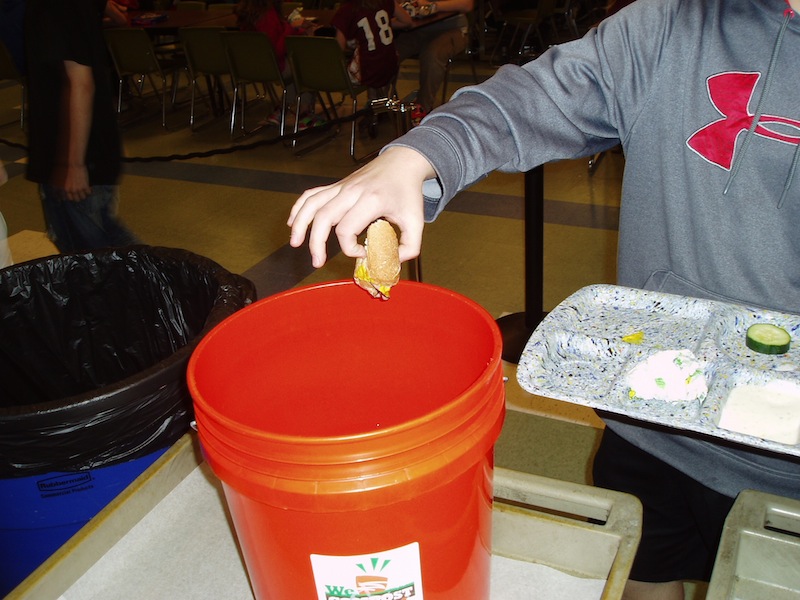

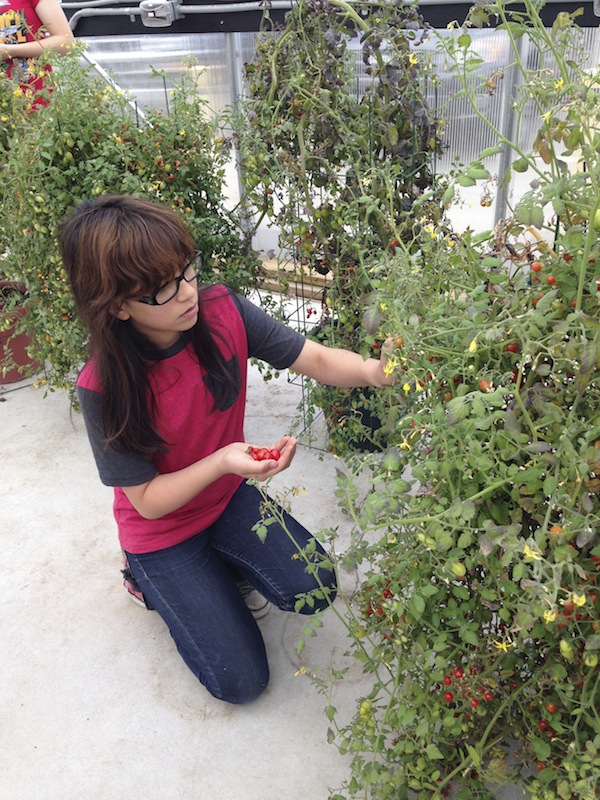
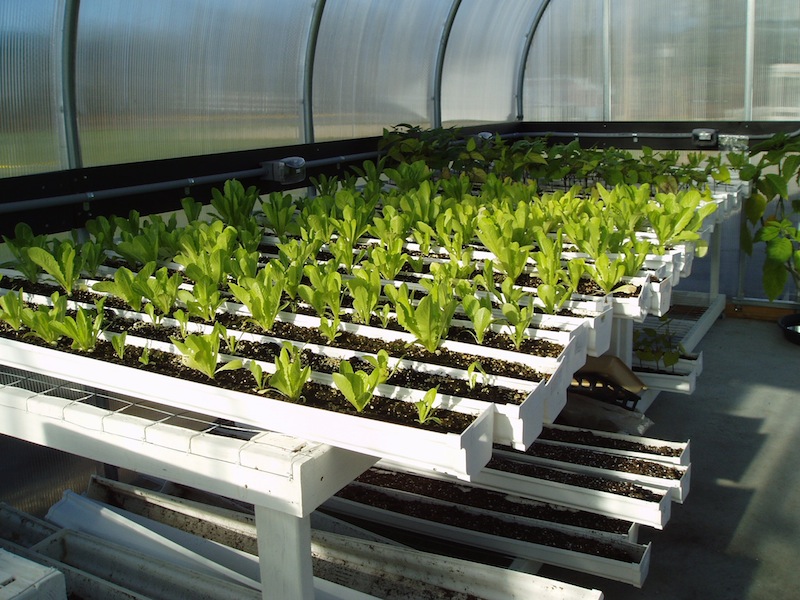
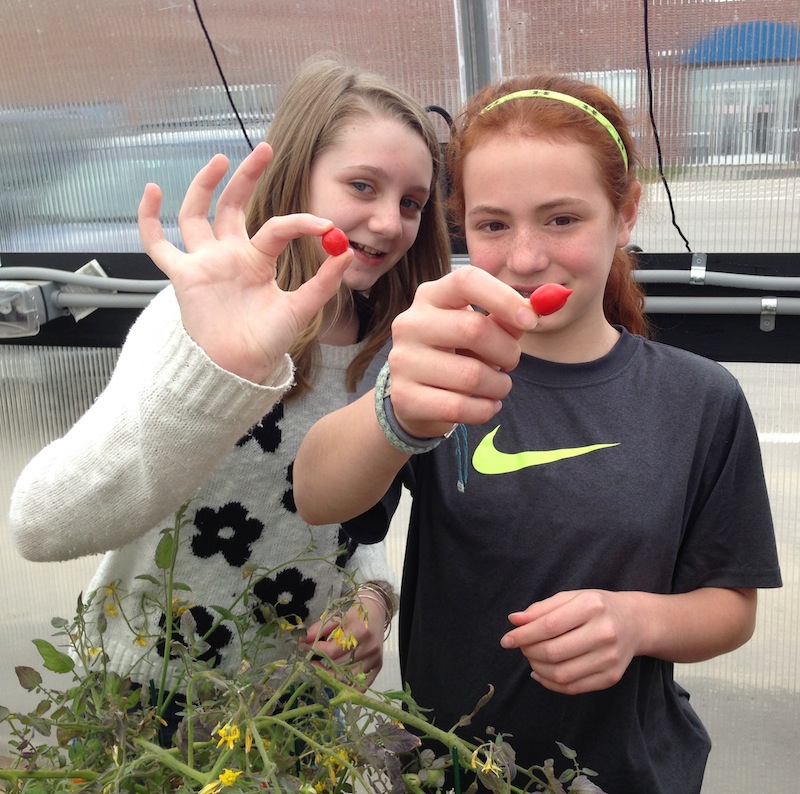
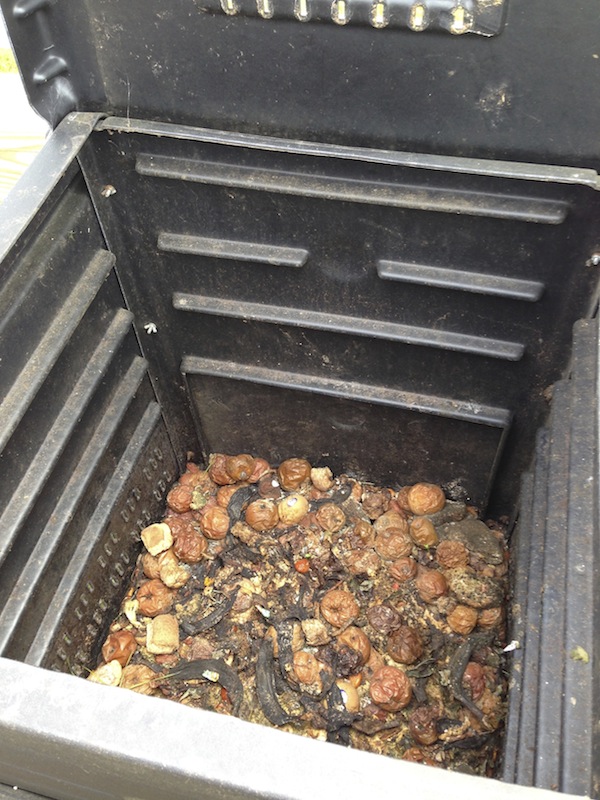


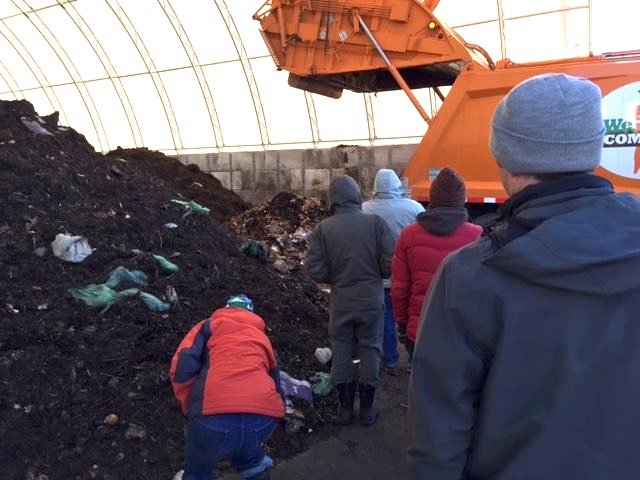
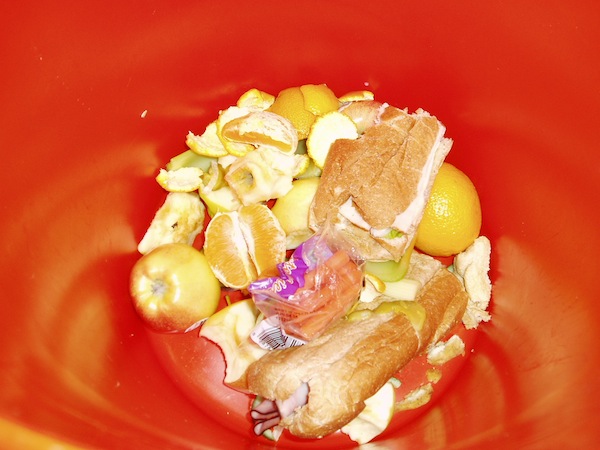
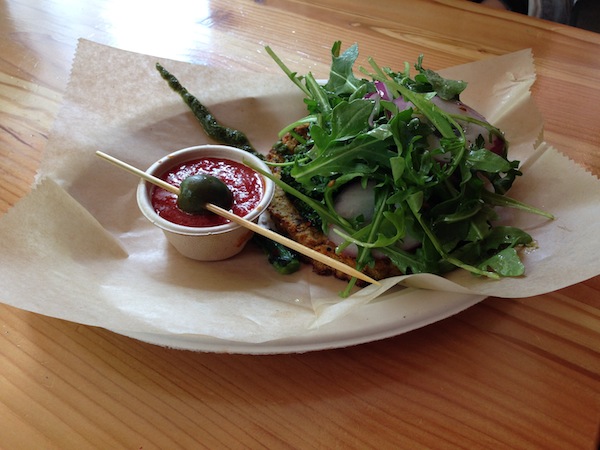
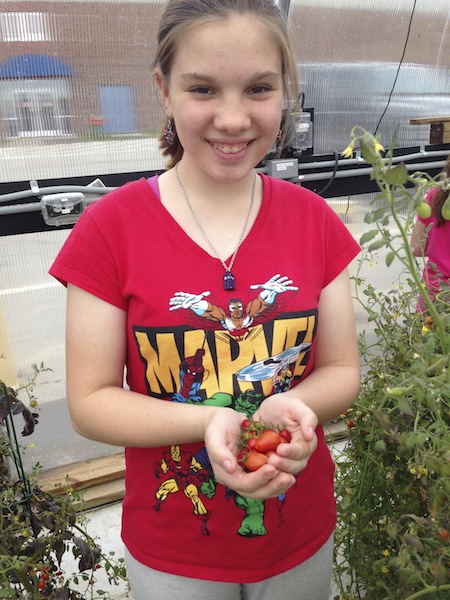
Congratulations to David Shaw and his helpers at Saco Middle School for growing food that is used to feed kids and for composting.
My best vegetable gardens have been ones where I have used compost. A neighbor in Windham, Maine once told me that when the compost is ready to put on the garden, shovel it into a large plastic pale and let it sit for 2 – 3 days. Then spread it near and around the plants. The compost smelled awful, but once it was mixed in the soil it was fine. I always wondered how something that smelled that badly could help grow great veggies.
Thank you for this wonderful post, hopefully other schools will take Saco’s lead. not only a hand’s on experience, but what a wonderful pleasure, to reap the rewards of a healthy garden.
It is so wonderful, to see something so positive, and moreso teaching children, for they are the future